When science runs in the family
Some scientists credit certain schoolteachers or graduate-school and postdoctoral advisers as role models. Henrik Dohlman at the University of North Carolina at Chapel Hill stays within his family. He credits his father.
“I really look up to him,” he says of Claes Dohlman. “He’s not only done great things professionally, he’s a very kind man.”
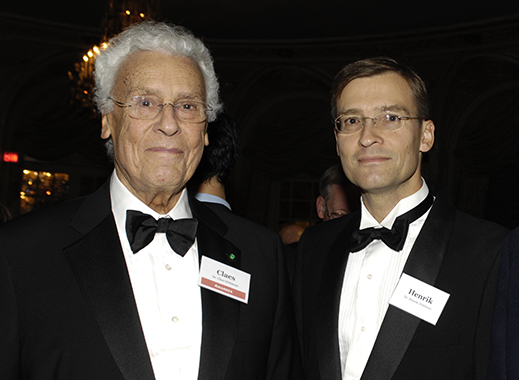 Claes and Henrik Dohlman
Claes and Henrik Dohlman
“Great things professionally” is a succinct way to put it. Claes Dohlman, who has been affiliated with Harvard University since 1958, is a well-known figure in vision research. Inducted into the American Society of Cataract and Refractive Surgery’s Hall of Fame in 2004 and the recipient in 2007 of the American Academy of Ophthalmology’s highest honor, the Laureate’s Award, the elder Dohlman is considered the founder of modern corneal science. His research into corneal physiology established the basis for current clinical practice with dry eye disease, corneal burns, wound healing and corneal transplantation.
Although he retired from university administration in 1989, Claes Dohlman has stayed on as a scientist. He is the director of Boston Keratoprosthesis Research and Development, which is part of Massachusetts Eye and Ear, where he has created a device he’s most famous for: an artificial cornea known as the “Boston keratoprosthesis.”
Claes Dohlman first conceptualized the device in the 1960s. But he turned his full attention to the device in the 1990s, once he retired from being the chair of Harvard’s ophthalmology department, director of an ophthalmology laboratory, and a chief at Massachusetts Eye and Ear. At a time when most retirees take life easier, Claes Dohlman has been in the laboratory, perfecting the device. “It’s work that really blossomed in his 70s and 80s,” says his son.
The artificial cornea can be used on patients who can’t rely on standard human corneal transplants, such as chemical-burn victims.The prosthetic, which resembles a collar button and is made of medical-grade plastic and titanium, won clearance from the U.S. Food and Drug Administration in 1992. To date, over 10,000 patients have had the device inserted in their eyes.
The younger Dohlman says of his 93-year-old father with a hint of understatement: “He has a lot of energy.”
From Sweden to the U.S.
Science and medicine surrounded Claes Dohlman as he grew up in Sweden. His father was the chairman of the ear-nose-throat department at the University of Lund. “It was hinted that there was only one worthwhile profession to consider and that was academic medicine,” remembers Dohlman. “All my friends were heading for medicine so I followed the path of least resistance.”
After completing an obligatory yearlong stint with the Swedish navy (“To be a naval officer was out of the question. I’m a weakling”), Dohlman got an M.D. and finished a residency in ophthalmology at the University of Lund’s Eye Clinic.
The chemistry of proteoglycans, which are proteins bound to glycosaminoglycans and plentiful in the cornea, intrigued him. Jonas Friedenwald was working at Johns Hopkins University on the histochemistry and biochemistry of corneal wound healing. Drawn by his work, Dohlman did a fellowship with Friedenwald in the early 1950s in Baltimore, Md., and then returned to Sweden to get a Ph.D. in biochemistry from the Karolinska Institute.
His work caught the attention of Charles Schepens, who was a famous retina surgeon at The Retina Institute of Boston. Schepens offered Dohlman a fellowship at Harvard University. Having been in the U.S. for the Hopkins fellowship, Dohlman says, he knew that “the possibilities, professionally, were so much greater.”
So in 1958, Dohlman and his wife, Carin, moved to the U.S. with three children. Two years later, Henrik became their fourth child and the first to be born in the U.S. Two more children followed.
The little professor
Henrik Dohlman displayed traits of an academic at a young age. “He was a little professor from the start,” says his father. “He was always very curious, always eager to lecture people on how things really are and copiously read all kinds of literature.”
He also had a willingness to experiment. Claes Dohlman describes a moment in 1968 when he and Carin opened the front door of their home to a sales representative from a hearing-aid company. All of the adults were confused. The sales representative insisted that a Henrik Dohlman had contacted the company. The parents couldn’t figure out why a hearing-aid sales representative wanted to see an 8-year-old boy.
The confusion cleared when the child admitted to finding an advertisement that offered free testing of a hearing aid. “I had this image that it would give me super powers, and I would hear what people were saying at great distances,” says Henrik Dohlman, still sounding sheepish almost five decades after the incident. “So I filled out the card, and then the salesman showed up. When he discovered that the person he was about to try to sell a hearing aid to was an 8-year-old boy with perfect hearing, he stomped off.”
The younger Dohlman recalls his childhood home in Arlington, Mass., as filled with joyful chaos of a large and close-knit family. “When my father came from work, we all swarmed to greet him and he would be tackled by his kids,” he says. “Dinnertime was masses of spaghetti and conversation.”
But Henrik Dohlman got hints from a young age that his father was a well-known figure in the community. “Every time I would pass the principal of my elementary school, he’d tousle my hair and say, ‘How’s the son of the famous Dr. Dohlman?’ I figured if my principal knew who he was, then my father must be prominent.”
Education was critical in the Dohlman family. Among the six, two are M.D.s and the rest are Ph.D.s. “My father is very proud of the fact” that all his children hold advanced degrees, says Henrik Dohlman. “If I can say one thing about my parents, is that they were exceedingly generous financially. They put six kids through college and then graduate or medical school. It’s something I took for granted when I was growing up. But once I got to college and grad school, I realized what a gift that was, to have no financial barriers to completing my education. That’s my inheritance.”
Henrik Dohlman was the only one to go into the life sciences. His other Ph.D.-toting siblings are economists. He credits his mother for turning him onto biology even though she holds a degree in political science. Carin Dohlman also grew up in Sweden, where, as her son notes, all schoolchildren are taught to appreciate the natural world and revere the 18th-century botanist and zoologist Carl Linnaes who laid the foundations for modern species nomenclature and ecology. Carin Dohlman shared her love and wonder of nature with Henrik.
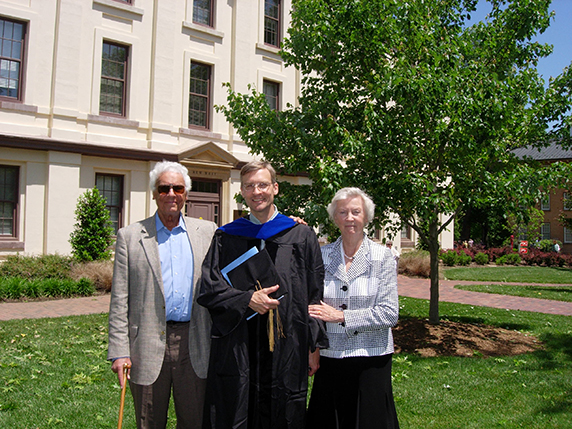 Henrik Dohlman flanked by his parents during a ceremony at the University of North Carolina at Chapel Hill.
Henrik Dohlman flanked by his parents during a ceremony at the University of North Carolina at Chapel Hill.
Identity of his own
Like his father, Henrik Dohlman earned a Ph.D. in biochemistry. But he is quick to point out that he always was intent on making his way through science as independently as possible. His research portfolio at UNC focuses on understanding the fundamental properties of yeast G protein-coupled receptors, a far cry from clinical corneal research.
But the first project Henrik Dohlman was involved in as a graduate student dropped him into his father’s territory. The younger Dohlman was in the laboratory of Robert Lefkowitz at Duke University in the 1980s. At the time, the laboratory was focused on cloning the β-adrenergic receptor, the first hormone-based G protein-coupled receptor identified and cloned. The work later led to Lefkowitz’s Nobel Prize in chemistry in 2012 along with Brian Kobilka at Stanford University.
“I thought I was working in an area that had nothing to do with vision research,” says Henrik Dohlman. “But the first thing we noticed about this receptor was it was clearly homologous to rhodopsin, the light receptor.”
Because of the striking similarities between the two systems, Henrik Dohlman’s first scientific conference was the annual meeting of the Association for Research in Vision and Ophthalmology. “It was not only one of my first public presentations, but it was a public presentation in front of about 500 of my father’s friends and colleagues, with my father in the front row,” recounts the younger Dohlman.
Perhaps realizing how unprepared his son was for his first presentation at a national scientific meeting, the older Dohlman pulled him aside and asked to see the slides and hear the talk before the event. “It was a very painful experience for both of us,” recalls Henrik Dohlman. “The talk that came out in the end bore no resemblance to what I’d prepared. It was the first and last time I’ve given a scientific presentation with my father in the audience.”
But Henrik Dohlman acknowledges that the pain of having his father redo his first public presentation for him was well worth it. “I’m a much better public speaker because of it!” he says with a laugh.
“Just shrug it off”
Besides teaching his son the value of a good talk, Claes Dohlman has influenced Henrik in two other critical ways. “Probably the most important one was that I saw from an early age that he really loved his work,” says his son. “That’s not a bad way to go through life.”
The other way Claes Dohlman has helped Henrik is to be a model for a good laboratory manager: “He’s always had a positive outlook. He rarely loses his temper. He tries to be generous in assigning credit. He does not get distracted by office politics or idle gossip.”
When it comes to research, Claes Dohlman knows how to roll with the punches. That’s something his son says he’s still working on. “There are many failures in this business. There are a lot of setbacks, and there’s no escaping that. You can drive yourself crazy if you let it get under your skin. The best that you can do is brush it off and move onto the next challenge,” says Henrik Dohlman, who is also an associate editor for the Journal of Biological Chemistry. “I hear my father’s voice in my head saying, ‘Just shrug it off.’”
 Rajendrani Mukhopadhyay is the chief science correspondent for the American Society for Biochemistry and Molecular Biology. Follow her on Twitter.
Rajendrani Mukhopadhyay is the chief science correspondent for the American Society for Biochemistry and Molecular Biology. Follow her on Twitter.Enjoy reading ASBMB Today?
Become a member to receive the print edition monthly and the digital edition weekly.
Learn moreGet the latest from ASBMB Today
Enter your email address, and we’ll send you a weekly email with recent articles, interviews and more.
Latest in Opinions
Opinions highlights or most popular articles
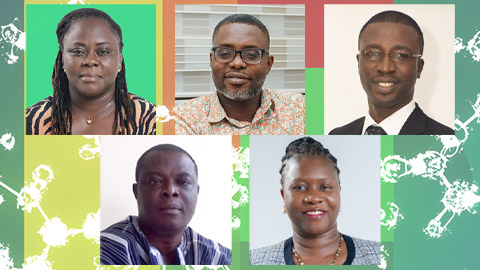
Getting to know scientists half a world away
In a program at Wellesley College, students interview and write about researchers at a university in Ghana.

Let’s make ASBMB awardees look more like BMB scientists
Think about nominating someone outside your immediate network.
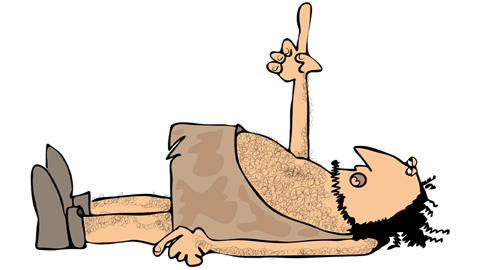
A paleolithic peer review
You might think review panels have only been around for the last century or so. You would be mistaken.

Early COVID-19 research is riddled with poor methods and low-quality results
The pandemic worsened, but didn’t create, this problem for science.

So, you went to a conference. Now what?
Once you return to normal lab life, how can you make use of everything you learned?
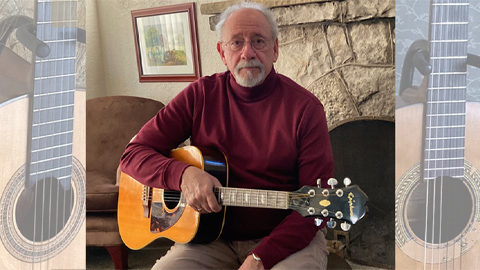
My guitar companion
A scientist takes a musical journey through time and around the world.

